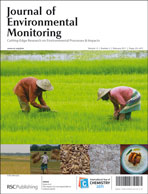Mercury and methyl mercury ratios in caimans (Caiman crocodilus yacare) from the Pantanal area, Brazil
Abstract
The Pantanal region is the largest floodplain area in the world and of great biological importance due to its unique flora and fauna. This area is continuously undergoing increasing anthropogenic threats, and has also experienced mercury contamination associated with gold mining and other anthropogenic activities. Pantanal caimans are top-level predators, and, as such, show great potential to accumulate mercury (Hg) by biomagnification. In this study 79 specimens from four locations in the Pantanal were analyzed for total Hg and methyl mercury (MeHg) by


 Please wait while we load your content...
Please wait while we load your content...